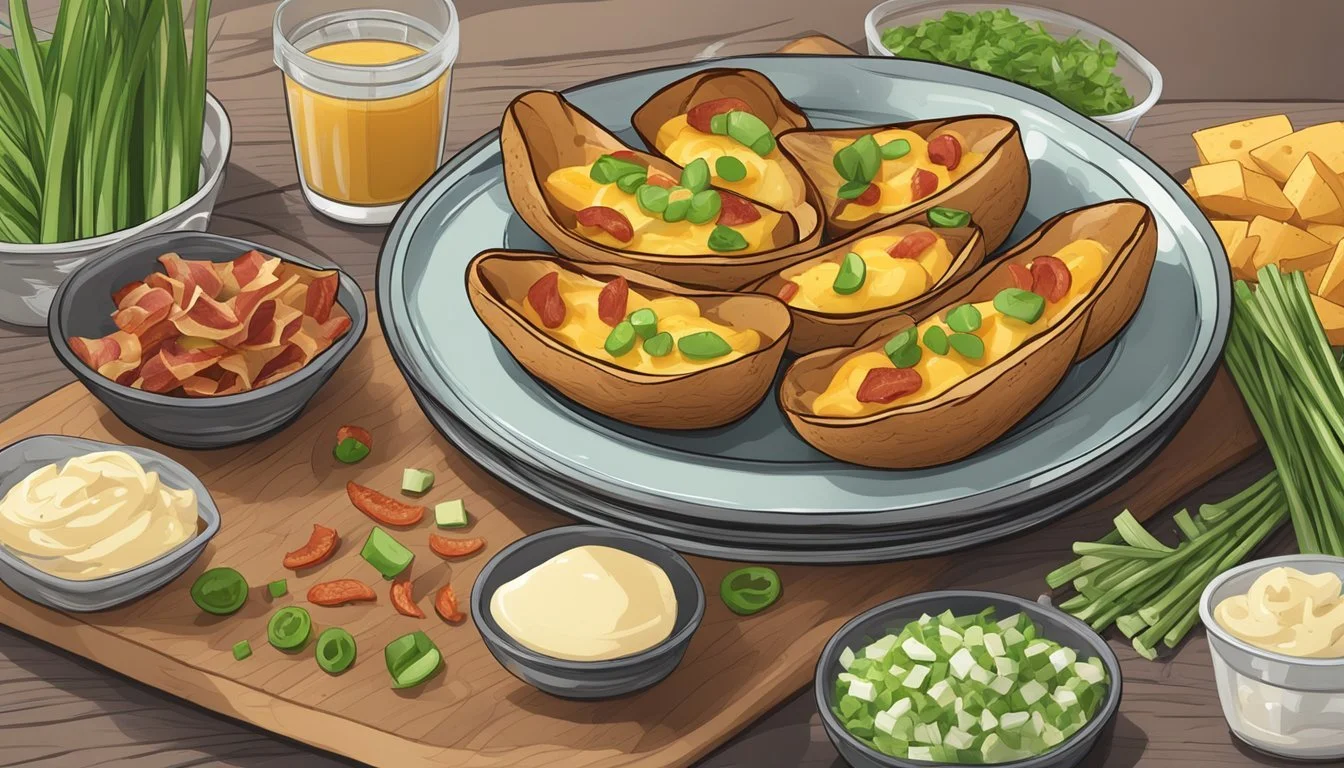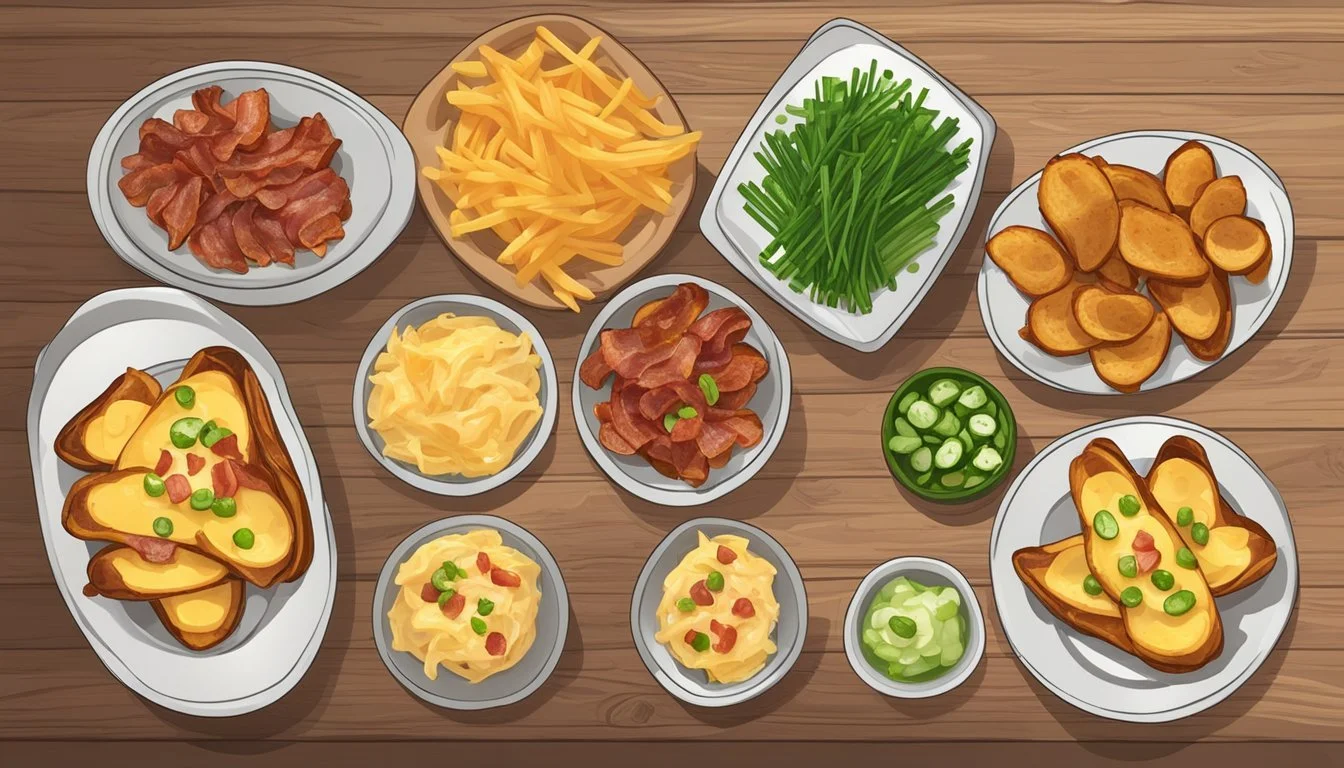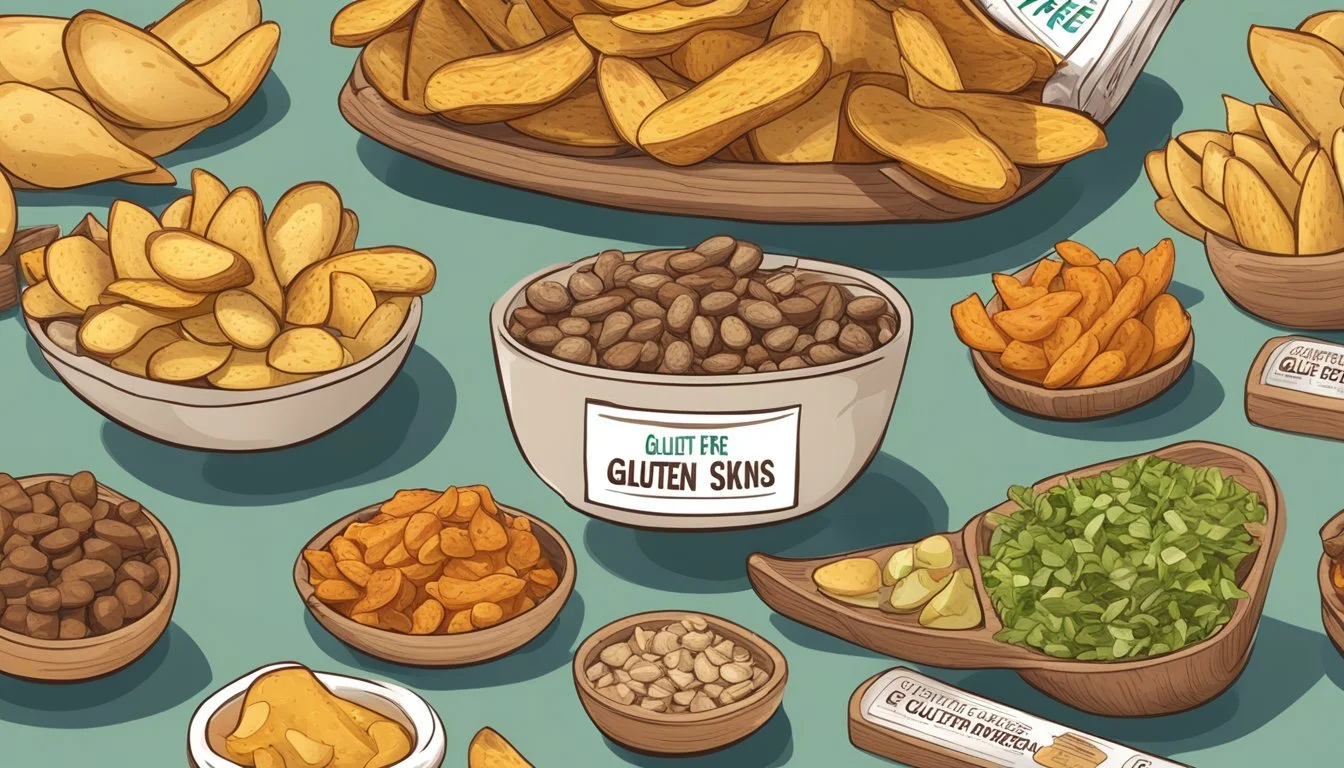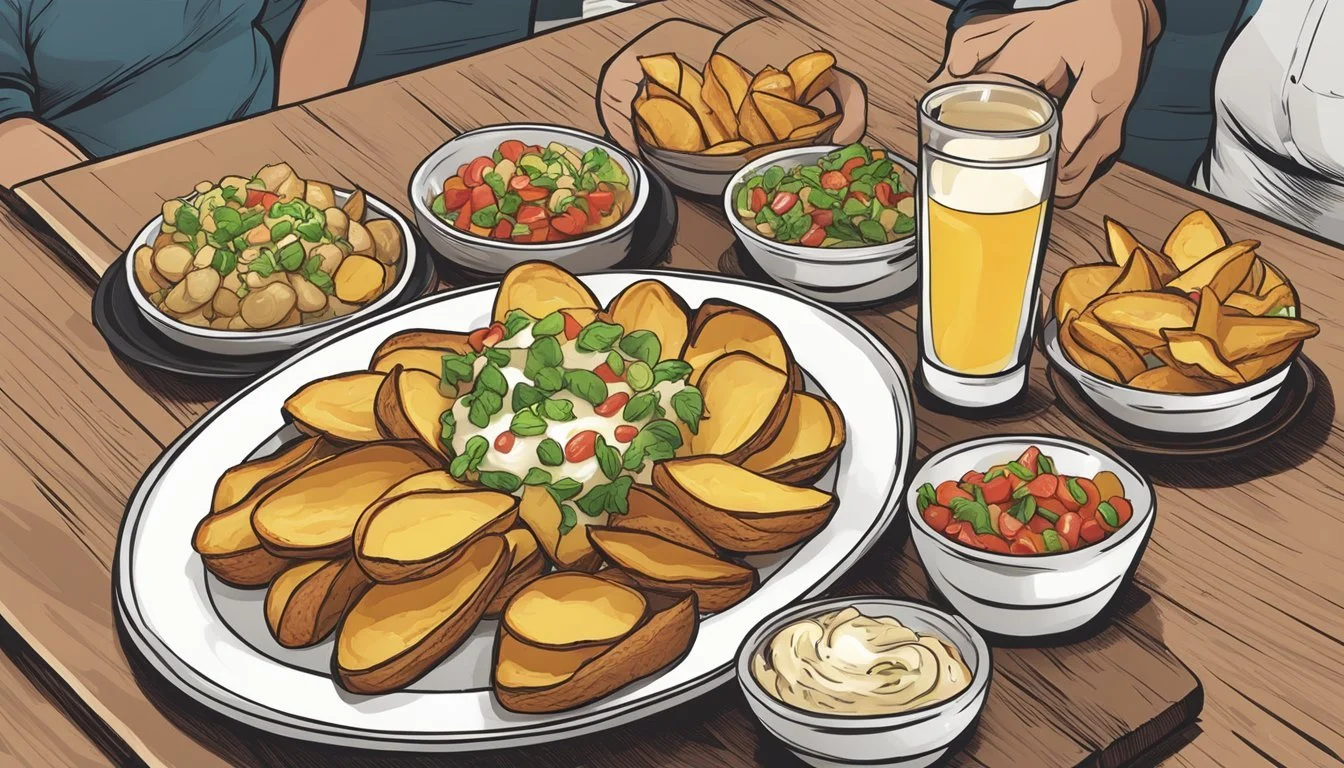Are Potato Skins Gluten-Free?
Uncovering the Truth for Celiac Sufferers
Potato skins are a popular and versatile food, often enjoyed as a snack, appetizer, or side dish. Potatoes (What wine goes well with potatoes?) by nature are gluten-free, making them a safe choice for those with gluten sensitivities or celiac disease. The skins, which are rich in nutrients and fiber, are no exception when they come from whole, unprocessed potatoes.
However, not all potato skin products are created equal. Pre-packaged or restaurant versions of potato skins may not always be gluten-free due to the potential addition of fillings, seasonings, or cross-contamination with gluten during cooking methods. It's essential for consumers to scrutinize the ingredients and preparation methods to ensure that the potato skins do not contain gluten or haven't been compromised by it.
When preparing potato skins at home, one can maintain their gluten-free integrity by carefully selecting toppings and avoiding any gluten-containing ingredients. A simple approach with olive oil, salt, and pepper can keep them within the boundaries of a gluten-free diet. For those looking to enjoy potato skins outside of the home, it's recommended to confirm the gluten-free status with the restaurant or by carefully reading product labels if purchasing pre-made versions.
Understanding Gluten-Free Diets
The concept of a gluten-free diet is critical for individuals with celiac disease, as ingestion of gluten can lead to serious health complications. These diets require meticulous evaluation of ingredients to avoid gluten and potential cross-contamination.
What Does Gluten-Free Mean?
When a product is labeled gluten-free, it means that it does not contain the protein gluten, which is found in wheat, barley, and rye. Gluten-free diets exclude all forms of these grains and any derivatives that contain gluten. It is not just about obvious sources like bread or pasta; hidden sources of gluten can be present in numerous processed foods, sauces, and even some cosmetics and medications. Therefore, reading labels and verifying the ingredients is crucial to ensure that a product can truly be considered gluten-free.
Cross-contamination is another concern. It occurs when gluten-free foods come into contact with gluten-containing foods or surfaces, making them unsafe for people with gluten sensitivity. This is particularly important in places like restaurants or shared kitchen facilities.
Importance for Individuals With Celiac Disease
For people with celiac disease, adhering to a gluten-free diet is not a lifestyle choice but a medical necessity. Celiac disease is an autoimmune disorder where the ingestion of gluten leads to damage in the small intestine. Even small amounts of gluten can trigger symptoms like abdominal pain, bloating, and diarrhea, and long-term complications can include malnutrition and neurological issues.
Avoiding only obvious sources of gluten is not sufficient for individuals with celiac disease; they must be vigilant about cross-contamination and hidden sources of gluten which can come from foods like soups, salad dressings, and beer. The diet requires constant attention to detail and an understanding of how foods are processed and prepared to prevent accidental gluten consumption.
Potatoes and Gluten
Potatoes are a staple in many diets around the world, particularly favored for their versatility and the fact that they are naturally gluten-free. This section explores the relationship between potatoes and gluten.
Are Potatoes Naturally Gluten-Free?
Potatoes, in their unprocessed form, are inherently gluten-free. They are a tuber from the Solanaceae family and do not contain gluten, a protein typically found in grains such as wheat, barley, and rye. Therefore, they are a safe choice for people with celiac disease or gluten sensitivity. Potatoes offer various nutrients, including vitamin C, potassium, and dietary fiber.
Cross-Contamination Concerns
While potatoes themselves do not contain gluten, there is a risk of cross-contamination, which can occur in both restaurants and manufacturing processes. It is crucial for gluten-sensitive individuals to verify that potato-based products and dishes such as pre-packaged potato skins, fries, or potatoes au gratin have not come into contact with gluten-containing ingredients or surfaces. Attention to the ingredients list on packaged goods and inquiring about food preparation practices at dining establishments can help mitigate the risk of unintentional gluten exposure.
Preparing Gluten-Free Potato Skins
When preparing gluten-free potato skins, one must be vigilant about the ingredients and cooking methods to avoid gluten contamination. Careful selection of potatoes and understanding the prep time and cook time are essential to achieve the perfect gluten-free appetizer.
Selecting the Right Potatoes
For gluten-free potato skins, russet potatoes are typically the potato of choice due to their sturdy skin, which crisps well in the oven. It's important to thoroughly wash the potatoes to remove any contaminants that might introduce gluten.
Avoiding Gluten in Preparations
To ensure that potato skins are gluten-free, every ingredient and surface involved in the preparation process must be free of gluten. Utensils, cutting boards, and even the baking sheet should be cleaned thoroughly. If using condiments, such as sauces or spices, they must be labeled gluten-free.
Recommended Cooking Methods
Potato skins can be cooked using an oven or a microwave. When baking, it's advised to use a parchment-lined baking sheet.
Prep Time: The potatoes should be cooked until fork-tender before being scooped and loaded with toppings.
Cook Time: Typically, bake the hollowed potatoes at a high temperature (around 425° F) for a crisp finish.
Total Time: The total time may vary, but in general, expect to spend about 20 minutes for baking plus additional preparation time.
For the optimal outcome, one should brush the potato skins with a neutral oil or a gluten-free butter substitute before baking, and turn the skins once midway through cooking to ensure even crispness.
Customizing Gluten-Free Toppings
When personalizing toppings for gluten-free potato skins, the key is to choose safe, gluten-free ingredients and get creative with the fillings to keep things both delicious and compliant with dietary restrictions.
Safe Gluten-Free Ingredients
One must ensure that all toppings are free of gluten-containing grains. The following list provides some commonly used gluten-free ingredients for potato skins:
Cheese: Cheddar cheese and vegan cheese options are safe, as long as they're not cross-contaminated.
Sour Cream: Plain sour cream is typically gluten-free.
Bacon: Naturally gluten-free, but always check for added seasonings.
Green Onions: These are safe and add a fresh flavor.
Olive Oil: Perfect for brushing on potato skins before baking to achieve crispness.
Spices: Pure spices are usually gluten-free but beware of blends that could contain gluten as an anti-caking agent.
Creative Gluten-Free Filling Ideas
For fillings, it’s about being imaginative while maintaining the integrity of a gluten-free diet. Here are some suggestions:
Toppings: Combine salsa and beans for a Mexican-inspired filling, ensuring both are labeled gluten-free.
Fillings: Experiment with different cheeses, such as a blend of cheddar and nutritional yeast for a cheesy flavor that even those who are dairy-free can enjoy.
Bacon: Instead of traditional bacon, one could use a gluten-free bacon substitute for a similar taste.
Spices: Use a mix of gluten-free spices to add depth to the potato skins or give them a thematic twist like Cajun or Italian.
Nutritional Considerations
When considering the nutritional profile of potato skins, it is critical to note that they contain a significant number of essential nutrients. They are not only a source of dietary fiber but also provide valuable vitamins and minerals.
Caloric and Macronutrient Content
Potato skins are relatively low in calories but high in dietary fiber. A medium-sized potato skin provides approximately:
Calories: 115 kcal
Protein: 2.5 g
Carbohydrates: 27 g
Fiber: 4 g
Fat: 0.1 g
Saturated fat: 0.03 g
This macronutrient balance makes them a good choice for individuals looking to manage their weight without sacrificing satisfaction.
Vitamins and Minerals
Potato skins are a nutritious part of the potato that offer a variety of vitamins and minerals. Key nutritional elements include:
Potassium: Vital for muscle function and maintaining a healthy blood pressure.
Vitamin C: An antioxidant that supports immune health and skin integrity.
Iron: Essential for blood production and oxygen transport.
Magnesium: Helps with muscle and nerve function, blood sugar control, and blood pressure regulation.
The table below summarizes the vitamin and mineral content in a medium potato skin:
Nutrient Amount Potassium 455 mg Vitamin C 11.8 mg Iron 1.1 mg Magnesium 32.7 mg
Potato skins contribute important nutrients that support overall health and can be a smart addition to a balanced diet.
Gluten-Free Potato Skin Recipes
Potato skins are a versatile snack that can easily be tailored to suit a gluten-free diet, making them perfect for appetizers or game day treats. These recipes maintain the deliciousness of traditional potato skins without the gluten, and also provide options for using leftovers creatively.
Classic Gluten-Free Potato Skins
To prepare Classic Gluten-Free Potato Skins, one starts by baking medium-sized russet potatoes until they are fork-tender. After letting them cool, they slice the potatoes in half lengthwise and scoop out the insides, leaving a small rim of potato flesh. These insides can be set aside for use in mashed potatoes or another recipe. The potato halves are then brushed with melted butter or olive oil, and placed back in a preheated oven until the edges turn crispy. Once baked, they are filled with grated cheddar cheese and placed back in the oven until the cheese melts. Garnished with crispy bacon bits and a dollop of sour cream, these gluten-free loaded potato skins become a mouthwatering snack.
Ingredients:
Medium russet potatoes
Butter or olive oil
Grated cheddar cheese
Bacon bits (ensure they are gluten-free)
Sour cream
Steps:
Bake potatoes at 425°F until fork-tender.
Cut and scoop to create skins.
Brush with oil and bake for crispness.
Add cheese and bacon, then bake until cheese melts.
Serve with sour cream.
Innovative Twists on the Traditional
For those seeking variety, Innovative Twists on the Traditional gluten-free potato skins cater to creative flavors and preferences. One might opt to brush the inside of the potato skins with avocado oil and season with garlic powder and smoked paprika before baking them to achieve a different taste profile. Post-bake, the potato skins can be filled with a mixture of Monterey Jack and pepper jack cheese for a spicy kick. To make use of leftover vegetables, one could top the cheese-filled skins with sautéed bell peppers, caramelized onions, or sun-dried tomatoes. Another variation includes drizzling gluten-free cheese sauce atop the baked skins and adding green onions for an extra pop of flavor.
Ingredients:
Alternative seasonings (garlic powder, smoked paprika)
Mix of Monterey Jack and pepper jack cheeses
Sautéed vegetables or sun-dried tomatoes
Gluten-free cheese sauce
Green onions
Steps:
Season and bake skins for a unique flavor.
Fill with a mix of cheese.
Add toppings like sautéed vegetables.
Drizzle with cheese sauce and garnish.
Eating Out and Gluten-Free Options
When dining out, individuals following a gluten-free diet must navigate menus carefully to ensure that potato skins and other potato-based dishes do not contain gluten. Understanding how to spot gluten-free options and what to question about preparation is crucial.
Finding Gluten-Free Potato Skins in Restaurants
Gluten-free diners should inquire about the cooking process of potato skins, as they may come into contact with gluten-containing ingredients through shared fryers or cooking surfaces. Restaurants with a gluten-free menu are more likely to offer potato skins that are safe to consume. Additionally, establishments that provide information on their cross-contamination practices provide assurance for those needing strict gluten-free options.
What to Look for on Menus
When examining menus, look for items labeled as "Gluten-Free." However, one must still consult with restaurant staff, as labels may not account for cross-contact risks. Key details include:
Preparation method: Ensure that potato skins are not fried in the same fryer used for breaded items.
Ingredient list: Be vigilant for additives that may contain gluten in pre-made or frozen potato skins.
In summary, diners should attentively review menu labels and communicate with restaurant staff to enjoy gluten-free potato skins while dining out.
Gluten-Free Potato Skins for Various Diets
Gluten-free potato skins are a versatile option for those with dietary restrictions. They align well with vegetarian and vegan diets, and can be adapted to meet additional dietary needs.
Vegetarian and Vegan Options
For vegetarians, potato skins can be a delightful part of the diet, especially when filled with cheese, sour cream, or other traditional toppings that are free from meat products. It's crucial for vegetarians to confirm that the cheese used is free from animal rennet, which is an enzyme used in cheese-making, but often derived from animals.
Vegans can enjoy potato skins by opting for vegan cheese alternatives and dairy-free sour cream. When preparing potato skins for vegans, one should ensure that every ingredient, including the butter or margarine used for brushing the skins, is plant-based.
Alternatives for Additional Dietary Restrictions
For individuals with dietary restrictions beyond avoiding gluten, such as lactose intolerance or allergies to certain ingredients, potato skins can still be on the menu. When choosing toppings, carefully reading labels or inquiring about ingredients in restaurant settings is vital.
Lactose Intolerant: Use lactose-free cheese and sour cream.
Nut Allergies: Ensure any vegan cheeses used do not contain nuts.
Soy Allergies: Avoid vegan cheese or sour creams made from soy.
By being mindful of the ingredients, those with dietary restrictions can safely enjoy gluten-free potato skins as part of their balanced diet.
Tips and Tricks for Perfect Gluten-Free Potato Skins
Creating gluten-free potato skins that are bursting with flavor and offer a satisfying texture is straightforward with the right approach. Here are targeted strategies for a home kitchen, ensuring that the outcome is both delicious and Instagram-worthy.
Achieving the Best Texture and Flavor
Select the Right Potatoes: For a firm exterior and fluffy interior, russet potatoes are usually the top choice. Their structural integrity holds up well after baking, making them ideal for filling with cheese and other toppings.
Cooking Method Matters: To start, baking the potatoes for about an hour at a high temperature ensures they are tender inside. After cooling slightly, the flesh should be scooped out, leaving about a 1/4-inch shell for the best final texture.
Seasoning Is Key: Before the final bake or air fry, brush the skins with olive oil or a butter mixture, and season generously inside with salt, pepper, and possibly other spices to create a flavorful experience.
Crispy Finish: To achieve a crispy skin, bake the seasoned potato skins cut side down for 10 minutes, then flip and continue baking until reaching the desired crispness. For the air fryer method, a similar approach is used, with a shorter cooking time.
Storing and Reheating Tips
Storing Leftover Skins: If you have leftover skins, they can be stored in an airtight container in the refrigerator for up to three days.
Reheating for Best Results: When reheating, an oven or toaster oven is preferred to maintain texture. Heat at 350° F until warmed through and crisp. Microwaving often leads to a softer texture, so it's best avoided if a crispy skin is desired.









